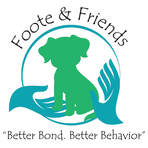|
First published 1/18 There was Superbowl commercial in 2006 where cowboys were herding cats. It's hilarious. (You can check it out at https://www.youtube.com/watch?v=Pk7yqlTMvp8 ). Herding cats seems crazy, and the herding cats myth was actually busted by the Mythbusters on one of their shows, but cats can actually be trained to do many things. They even have agility competitions for cats. One of our clients has taught his cat, Parker, many tricks. He can lie down, roll over, play fetch and jump through a hoop, among other things. You can check out his video on our Facebook page. Our housecats all know how to sit and the young ones (6 and 7) can give hi-fives. I even taught our deaf cat some visual cues for "come," "sit," and "good boy."
Cats are not just small dogs. I love dogs. Dogs are loyal and typically go out of their way to please us. Their pleasure in life is to be a part of our family. But cats are great. They are fascinating. They are results-driven, and unless they see a clear advantage in doing what we are asking, they aren't likely to go out of their way to do what we want. That is not to say that cats are cold and unaffectionate. They can be very affectionate and loving. Our clinic cat waits for me outside the office until I get to work. Our cats at home sleep with me almost every night. But it takes a lot more to earn a cat's trust than most dogs. Cats are a perplexing mix of predator and prey, and this has a big influence on how they view the world. Cats use their small size and agility to avoid dangerous situations when possible. It is so easy and natural for a cat to hide on top of the refrigerator, or under the bed, or behind the couch if they are uncomfortable with a situation. They just tend to disappear. However, when they feel threatened, they have fearsome weapons: sharp claws, sharp teeth and amazing agility. Yes, dogs can be aggressive when cornered, but not typically to the extent we see in cats. This carries over to training situations. People, dogs, cats all have difficulty learning when stressed. This is what we see when kids shut down when they have to take a test or when a person has to talk in front of a large group of people. It is the same thing that happens when you can't get your dog to sit when it's at the vet's office. The fight or flight reaction takes over, and adrenaline takes away conscious thought. Historical training methods have employed positive punishment and negative reinforcement. Positive punishment is something we add to discourage a behavior, like a leash correction when a dog pulls on the leash. Negative reinforcement is stopping or taking away something to encourage a certain behavior, like releasing pressure on a dog's hips when he sits. It's not cruel, and dogs typically respond to these things because they understand us and want to please us. Now, imagine doing that with a cat. This is exactly why it is difficult to imagine training a cat, but IT CAN BE DONE. Not in that way, but in an equally or maybe a more effective way- positive reinforcement and conditioning. So, what does that mean? Obviously, if your cat does what you ask, you reward him, but how do you get him to do what you want? Initially, you can use a treat or a toy to lure him to perform the behavior. If you have a treat, and hold it down and he comes, give him the treat, once he does this predictably, you can add the word "come." Congratulations! You have trained your cat to come. Hold a treat just over his forehead, and when he sits, give him the treat. Add the word "sit" once he gets it. Presto! You have a cat that sits! Okay, so you can teach your cat to come and sit. Why would you want to do that? Other than the fact that it is fun for you and your cat, it builds communication and understanding. It helps your cat gain confidence in you so that he is not living under the bed or on top of the refrigerator. It helps you make your pet cat feel less like prey and more like a king. Also, wouldn't you rather have your cat doing tricks for you than scratching up your furniture, peeing in the house or walking all over your counters? Basic training in cats can help with all these behavior problems. So maybe we'll never be able to herd cats, but the things your cat can do will amaze you!
4 Comments
12/29/2018 07:02:26 am
Even if they were animals, they can still understand. It is similar on having dogs. It can understand and sympathize the human emotion. I love that fact to animals. They can feel what we feel and sometimes, they are the best emotion holder. They can make us feel more comfortable than a comfort of someone. On the other hand, losing a pet is also something that is terrible to happen. Once you invest onto something, losing it will always be painful.
Reply
12/5/2021 04:37:58 pm
Also, like you said, preventing a problem is way easier then fixing one. I am not sure the last time my dog went in for a physical. I should probably get him in, and checked up to make sure everything is all good.
Reply
Leave a Reply. |
Dr. Andi
Mostly behavior with a little life mixed in! Archives
March 2023
Categories |
Contact Us:
|
Hospital hours:
Monday: 6:30am - 6:30pm
Tuesday: 7am - 7pm Wednesday: 6:30am - 6:30pm Thursday: 7am - 7pm Friday: 6:30am - 6pm Saturday: 8am - 1pm Closed Sunday |
|
Site powered by Weebly. Managed by IDEXX Laboratories
|
 RSS Feed
RSS Feed





